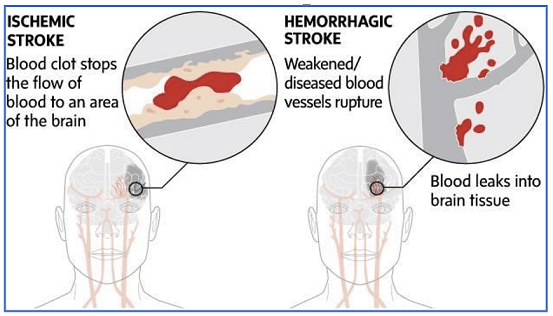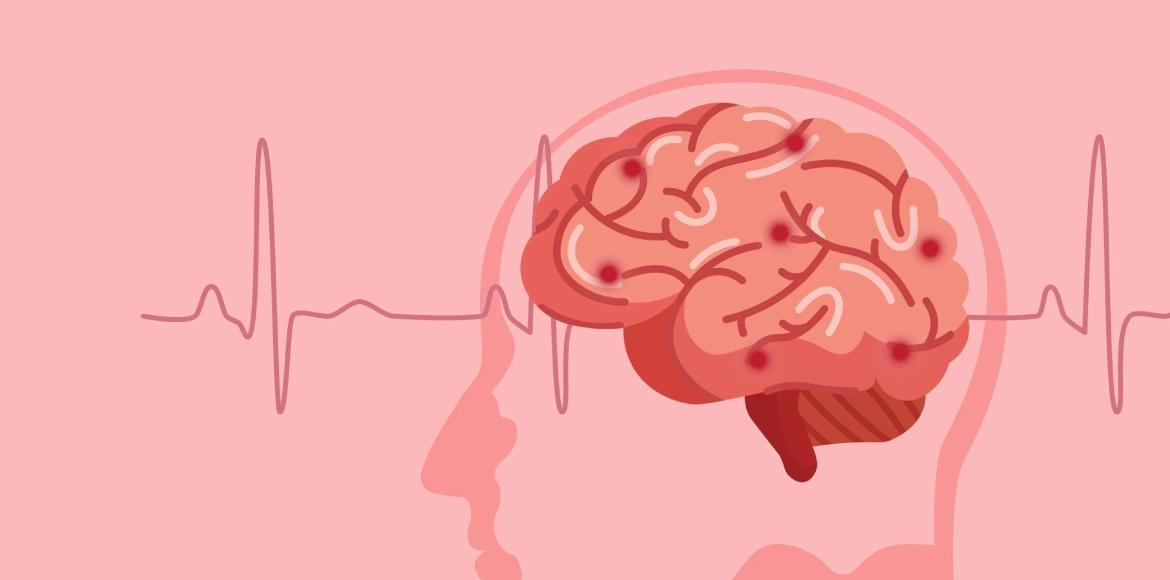A stroke is your brain’s equivalent of a heart attack, happening when there’s an issue with blood flow to part of your brain. This can happen when blood vessels are blocked or because of bleeding in your brain. Strokes are a life-threatening emergency, and immediate medical attention is critical to prevent permanent damage or death.
IMPORTANT: A stroke is a life-threatening emergency condition where every second counts. If you or someone with you has symptoms of a stroke, IMMEDIATELY call 911 (or your local emergency services number). The quicker stroke is treated, the more likely you’ll recover without disability.
To recognize the warning signs of a stroke, remember to think FAST:
F. Ask the person to smile. Look for a droop on one or both sides of their face, which is a sign of muscle weakness or paralysis.
A. A person having a stroke often has muscle weakness on one side. Ask them to raise their arms. If they have one-sided weakness (and didn’t have it before), one arm will stay higher while the other will sag and drop downward.
S. Strokes often cause a person to lose their ability to speak. They might slur their speech or have trouble choosing the right words.
T. Time is critical, so don’t wait to get help! If possible, look at your watch or a clock and remember when symptoms start. Telling a healthcare provider when symptoms started can help the provider know what treatment options are best for you.
How common is a stroke?
Strokes are very common. Worldwide, strokes rank second among the top causes of death. In the United States, stroke is the fifth cause of death. Strokes are also a leading cause of disability worldwide.
How does a stroke affect my body?
Strokes are to your brain what a heart attack is to your heart. When you have a stroke, part of your brain loses its blood supply, which keeps that brain area from getting oxygen. Without oxygen, the affected brain cells become oxygen-starved and stop working properly.
If your brain cells go too long without oxygen, they’ll die. If enough brain cells in an area die, the damage becomes permanent, and you may lose the abilities that area once controlled. However, restoring blood flow may prevent that kind of damage or at least limit how severe it is. That’s why time is critical in treating a stroke.
What are the types of stroke?
Hemorrhagic stroke
Ischemic stroke
Ischemia is when cells don’t get enough blood flow to supply them with oxygen. This usually happens because something blocks blood vessels in your brain, cutting off blood flow. Ischemic strokes are the most common and account for about 80% of all strokes.
Hemorrhagic stroke
Hemorrhagic strokes cause bleeding in or around your brain. This happens in one of two ways:

What are the symptoms of a stroke?
Different areas of your brain control different abilities, so stroke symptoms depend on the affected area. An example of this is a stroke that affects Broca’s area, a part of your brain that controls how you use muscles in your face and mouth to speak. That’s why some people slur their words or have trouble speaking when they have a stroke.
The symptoms of stroke can involve one or more of the following:
Slurred or garbled speaking (dysarthria).
Loss of muscle control on one side of your face.
Sudden loss — either partial or total — of one or more senses (vision, hearing, smell, taste and touch).
Blurred or double vision (diplopia).
Emotional instability and personality changes.
How are strokes treated?
Treating a stroke depends on many different factors. The most important factor in determining treatment is what kind of stroke a person has.
Ischemic: With ischemic strokes, the top priority is restoring circulation to affected brain areas. If this happens fast enough, it’s sometimes possible to prevent permanent damage or at least limit a stroke’s severity. Restoring circulation usually involves a certain medication type called thrombolytics, but may also involve a catheterization procedure.
Hemorrhagic: With hemorrhagic strokes, treatment depends on the location and severity of the bleeding. Reducing blood pressure is often the top priority because this will reduce the amount of bleeding and keep it from getting worse. Another treatment option is to improve clotting so the bleeding will stop. Surgery is sometimes necessary to relieve pressure on your brain from accumulated blood.
What medications or treatments are used?
The medications and treatments used vary depending on the type of stroke and how soon a person receives treatment after the stroke. There are also long-term treatments for stroke. These happen in the days and months after emergency treatment deals with a stroke’s immediate threat.
Overall, your healthcare provider is the best person to tell you what kind of treatment(s) they recommend. They can tailor the information they provide to your specific case, including your medical history, personal circumstances and more.

